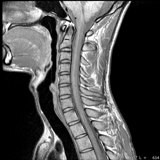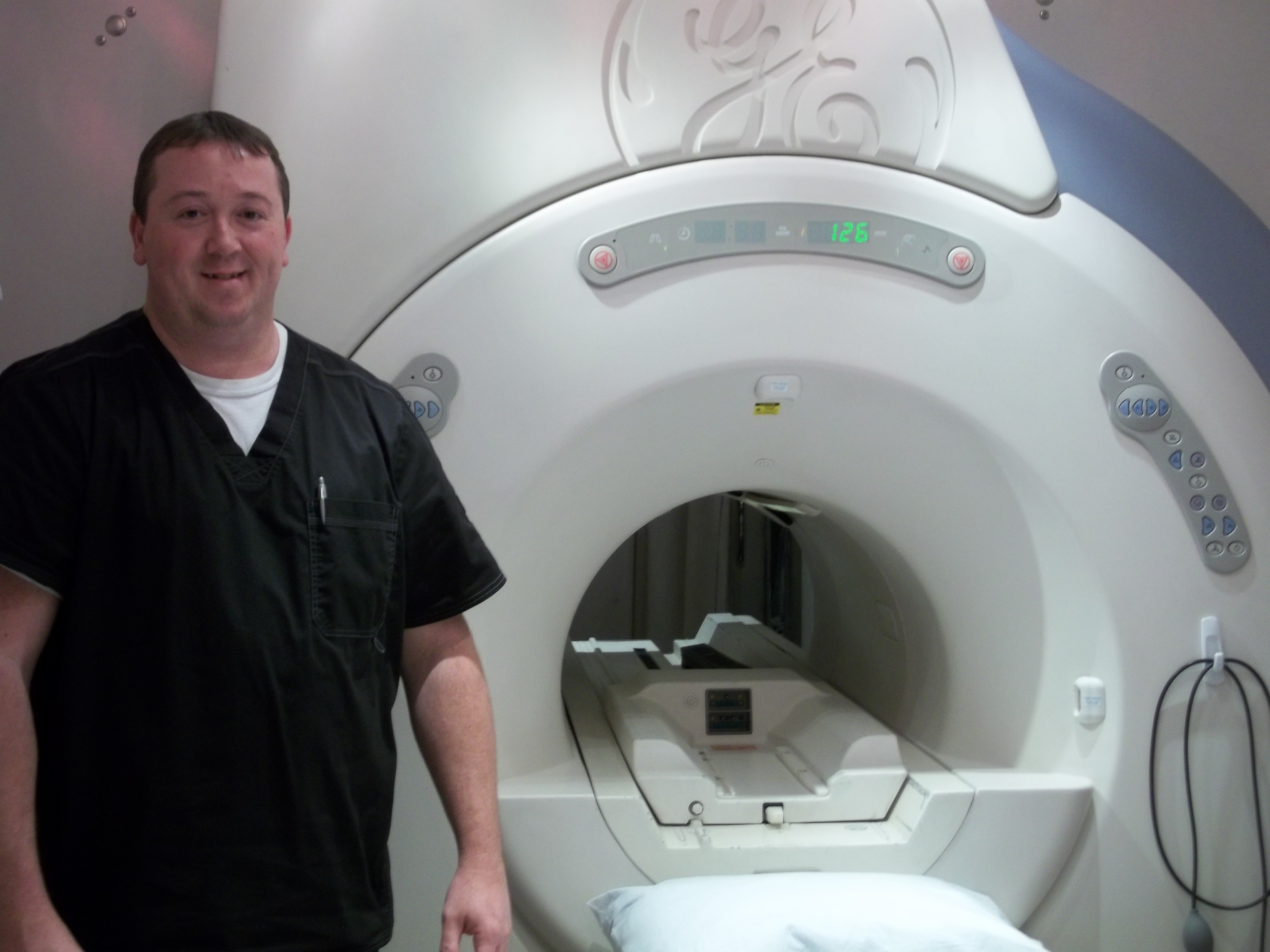Magnetic resonance imaging (MRI)
Magnetic resonance imaging (MRI) uses radiofrequency waves and a strong magnetic field rather than x-rays to provide remarkably clear and detailed pictures of internal organs and tissues. The technique has proven very valuable for the diagnosis of a broad range of pathologic conditions in all parts of the body including cancer, heart and vascular disease, stroke, and joint and musculoskeletal disorders. MRI requires specialized equipment and expertise and allows evaluation of some body structures that may not be as visible with other imaging methods.
What to Expect
Before the procedure - You will be asked to complete and sign an MRI Safety Screening Form. The technologist will ask you questions related to your health history. Please provide as complete a history as possible. If you have any questions or concerns about the exam, please feel free to ask the technologist before the exam has begun.
To ensure your safety, the technologist may also repeat a number of the items listed on the Screening Form.
You will be asked to remove all metal objects, including all body piercings, before the exam. Purses, billfolds and personal items will be placed in a security box.
Please use the restroom prior to your exam appointment. Once the exam has begun, any interruption may result in restarting the exam.
The Procedure - A technologist will position you as comfortably as possible on the scanning table. Depending on the body part to be examined, you will enter the scanner either feet-first or head-first, as the part to be examined must be in the center of the magnet for the machine to work properly. You will be given earplugs to muffle the loud tapping noises of the machine. You may also be given an alert bulb so you may summon the technologist at any time during the exam.
The technologist will perform your exam from an adjoining control room. You will be able to communicate with the technologist with the aid of the alert bulb and an intercom system. It is important that once the technologist positions you for the exam you remain very still and breathe normally. Throughout the exam you will hear loud knocking noises within the machine.
You may be required to have an injection during the process of the exam. This injection is generally in your arm and consists of a contrast material that will highlight certain structures in your body (the contrast generally has very few adverse effects.) The radiologist and/or your doctor will determine if the contrast material is necessary based on your personal history. Each MRI exam requires several sets of images, called sequences, which may last for several minutes. The average exam will take 30-45 minutes.
After the procedure - You should arrange to get the results of the exam from your doctor, as he/she will receive a report. You should feel no side effects from the scan and may go about your normal daily routine.


